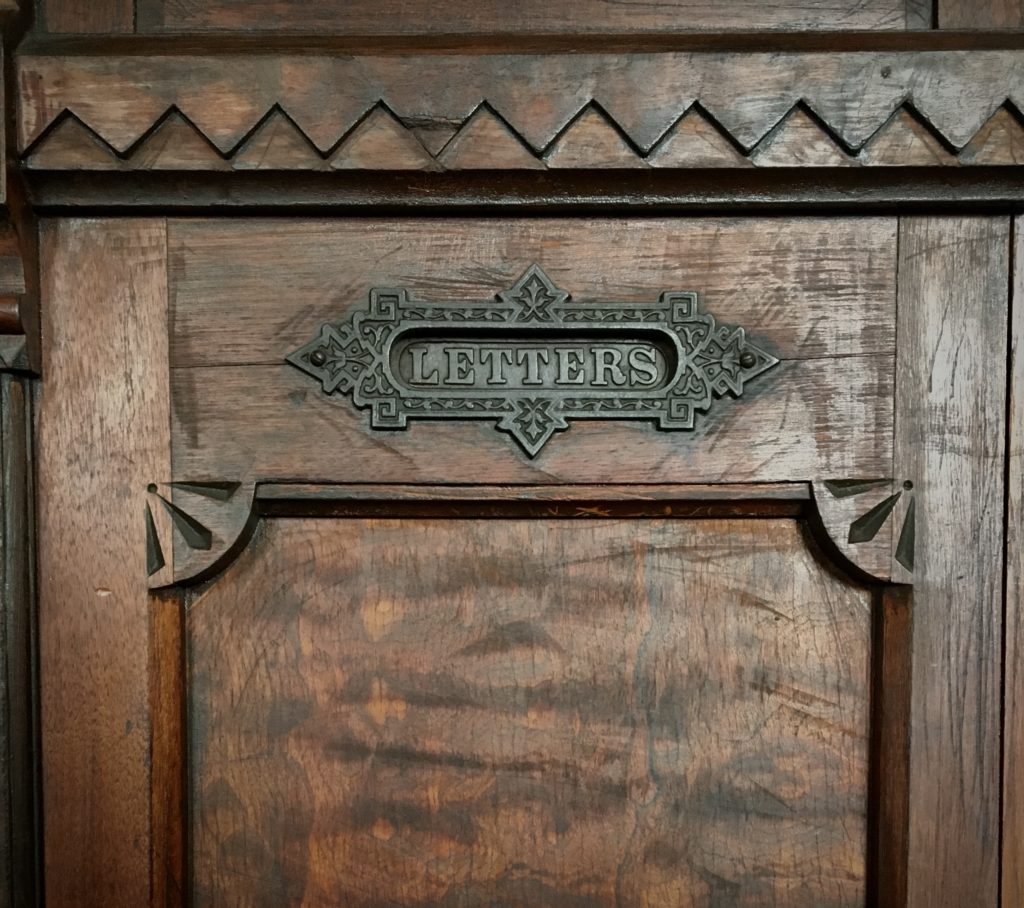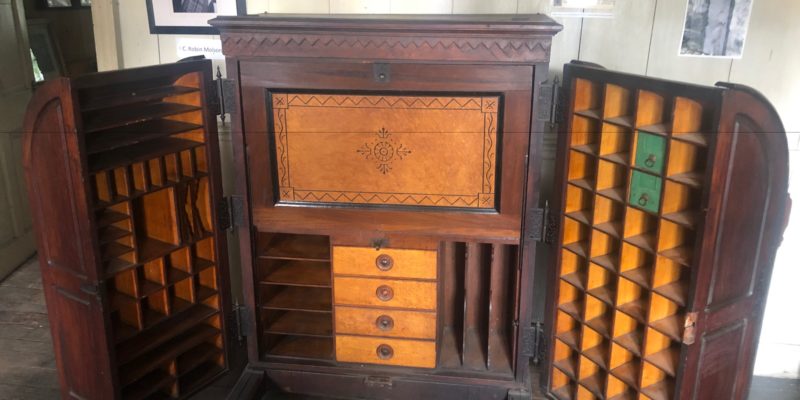The Wooton desk is a variation of the fall front desk.
History
An Indianapolis, Indiana, entrepreneur (who was later to become a Protestant preacher) called William S. Wooton obtained patents for his design and established a company in 1870. Production continued until about 1884. The Wooton desk is their better known secretary desk; the Wooton desk company also produced a so-called rotary desk, which is in fact a pedestal desk whose pedestals have segments which turn on themselves to expose more drawers and nooks.
The Wooton desk was introduced at the end of the 19th century, at a time when office work was changing in a drastic fashion with an increase in paperwork that led to the introduction of filing cabinets, among other things. The white-collar worker invaded the office in huge numbers. The new reservoir based fountain pen and the typewriter were used to produce greater quantities of office documents than ever before. In this context, desks which required users to fold and title each letter or document and place it in a pigeon hole, or small nook, were simply not efficient. It was faster to place an unfolded piece of paper in a folder and place the folder in a file cabinet or file drawer.
Wooton desks in good condition are sometimes sold in auctions for the same price as a top of the line luxury automobile.
Design
Wooton desks were probably not the costliest desks in series production, but they were possibly the ones with the most drawers, nooks and crannies imaginable. Only a few examples of the cupboard desk had more divisions, but they were of a very utilitarian different style, and were often produced by the very families or communities which used them, such as the Shakers. The armoire desk is the closest modern relative to the Wooton, and despite the use of rich veneers by some makers, it is a much more practical piece of furniture.
The Wooton secretary desk usually rests on a four-legged quadruped support equipped with casters. The main body of the desk is filled with dozen or several dozen (depending on the model) of small drawers and nooks for papers and small objects.
As in a «secrétaire à abattant» or in a Fall front desk the main working surface or desktop is hinged and lifted completely from the horizontal to the vertical in order to lock up the desk, forcing the user to gather up and store all papers and implements beforehand. Unlike the «secrétaire à abattant» however, the Wooton desktop hides only a few of the small drawers and nooks. The real lockup is done by closing two massive hinged panels which are themselves as deep as the desk and are like it filled with small drawers and nooks of all sizes.
References
- Boyce, Charles, Dictionary of Furniture, 2nd ed. New York: Roundtable Press Book, 2001.
- Gloag, John, A Complete Dictionary of Furniture, Woodstock, N.Y.: Overlook Press, 1991.
- Showalter, Camille, and Janice Driesbach, Wooton Patent Desks: A Place for Everything and Everything in its Place (1983) ISBN 0-253-28930-0
- Walters, Betty Lawson, The King of Desks: Wooton’s Patent Secretary, Smithsonian Studies in History and technology #3, Washington: Smithsonian Institution Press, 1969.



